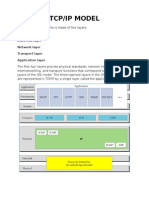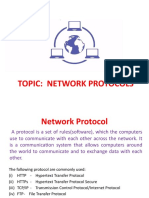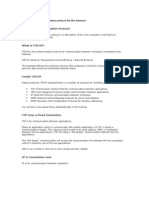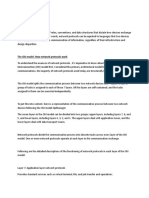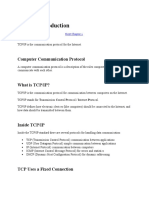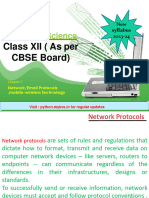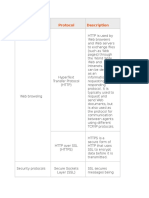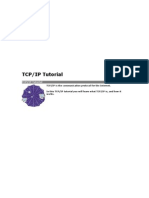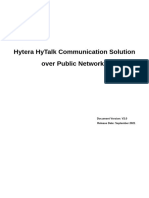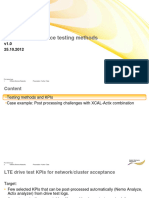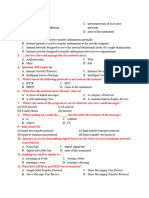0% found this document useful (0 votes)
5 views9 pagesIntroduction-to-Network-Protocols (PDF - Io)
The document provides an overview of various network protocols essential for communication and data exchange, including TCP/IP, HTTP, HTTPS, FTP, VoIP, SMTP, and POP3. It explains the functions, features, and security aspects of each protocol, highlighting their roles in internet connectivity and data transfer. Additionally, it includes a diagram illustrating the relationships between these protocols.
Uploaded by
ayushkr.2008.decCopyright
© © All Rights Reserved
We take content rights seriously. If you suspect this is your content, claim it here.
Available Formats
Download as PDF, TXT or read online on Scribd
0% found this document useful (0 votes)
5 views9 pagesIntroduction-to-Network-Protocols (PDF - Io)
The document provides an overview of various network protocols essential for communication and data exchange, including TCP/IP, HTTP, HTTPS, FTP, VoIP, SMTP, and POP3. It explains the functions, features, and security aspects of each protocol, highlighting their roles in internet connectivity and data transfer. Additionally, it includes a diagram illustrating the relationships between these protocols.
Uploaded by
ayushkr.2008.decCopyright
© © All Rights Reserved
We take content rights seriously. If you suspect this is your content, claim it here.
Available Formats
Download as PDF, TXT or read online on Scribd
/ 9











